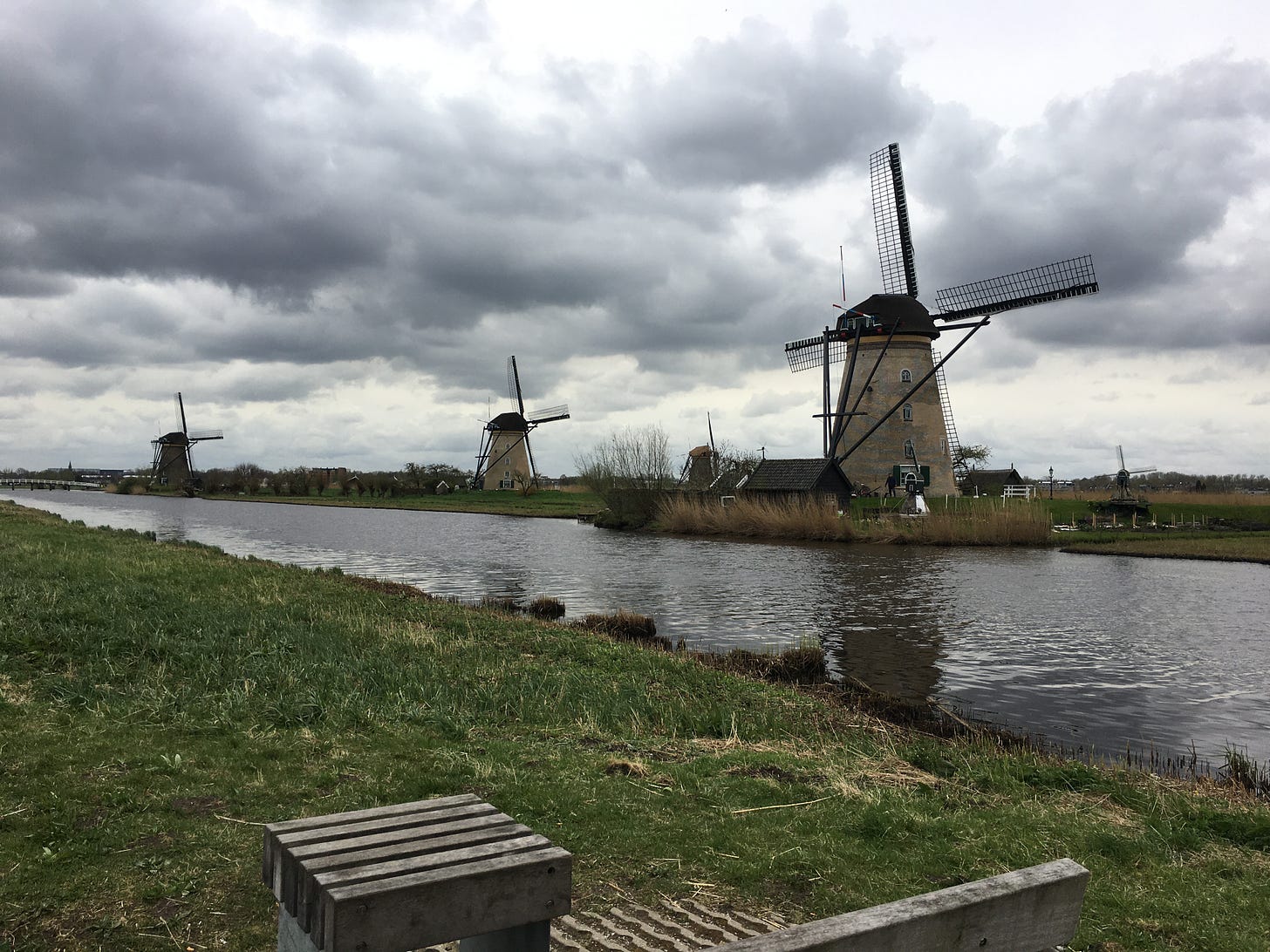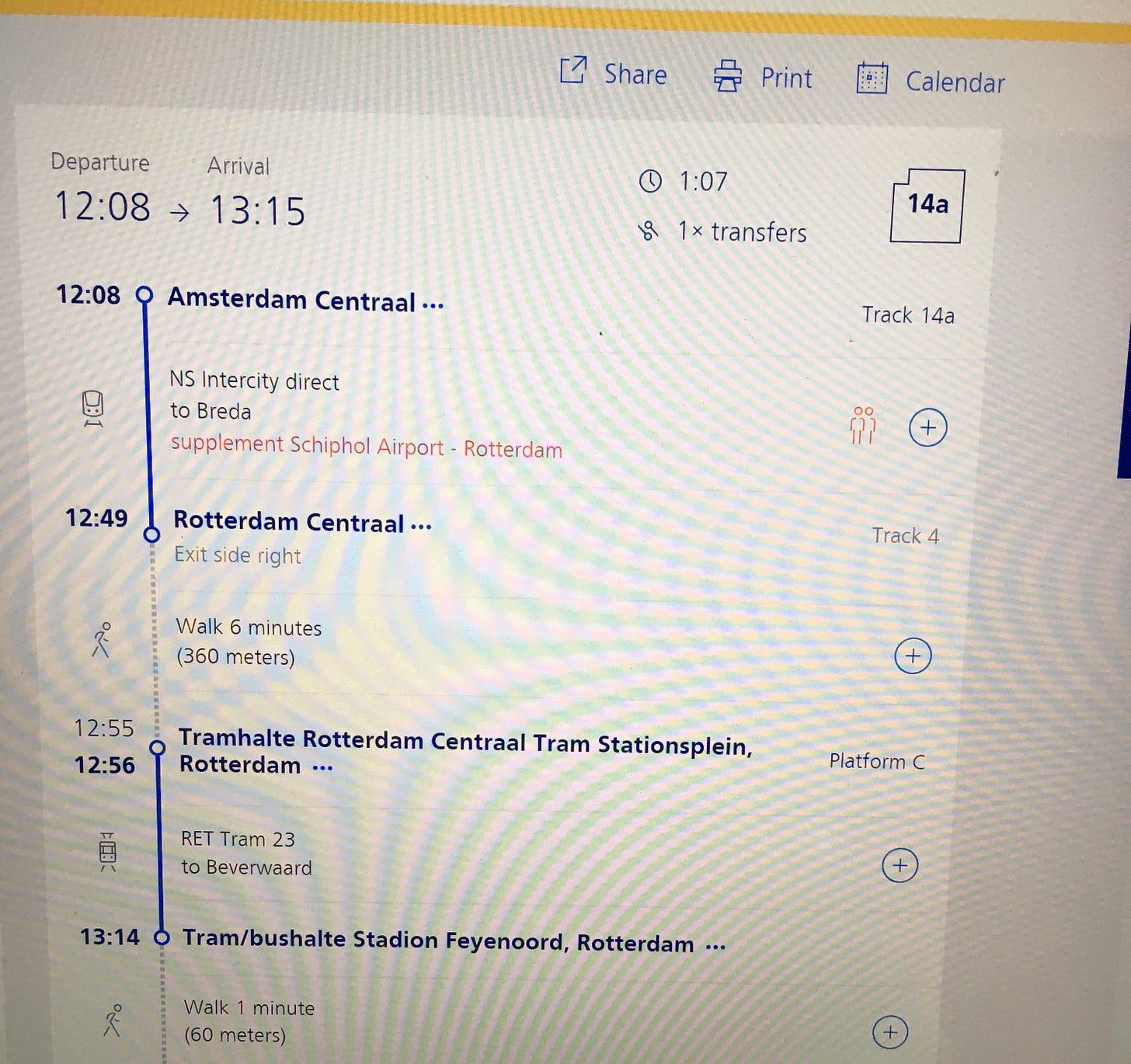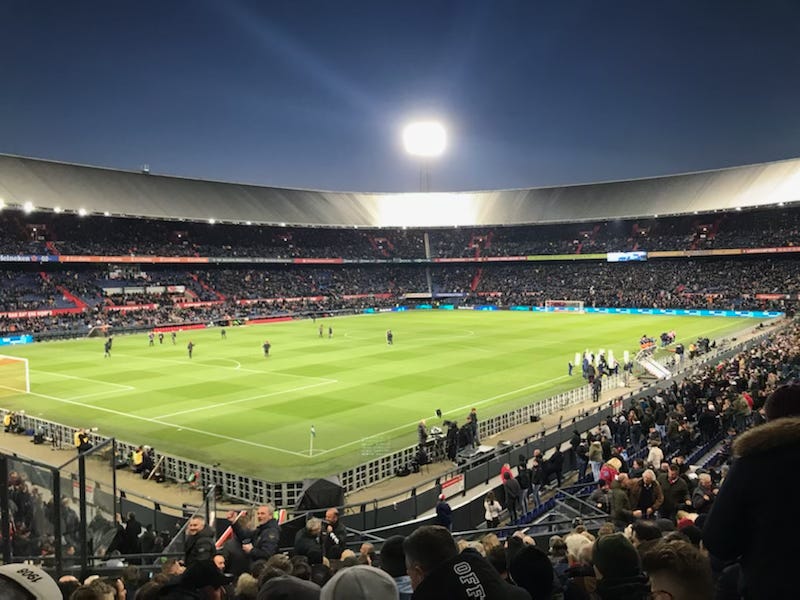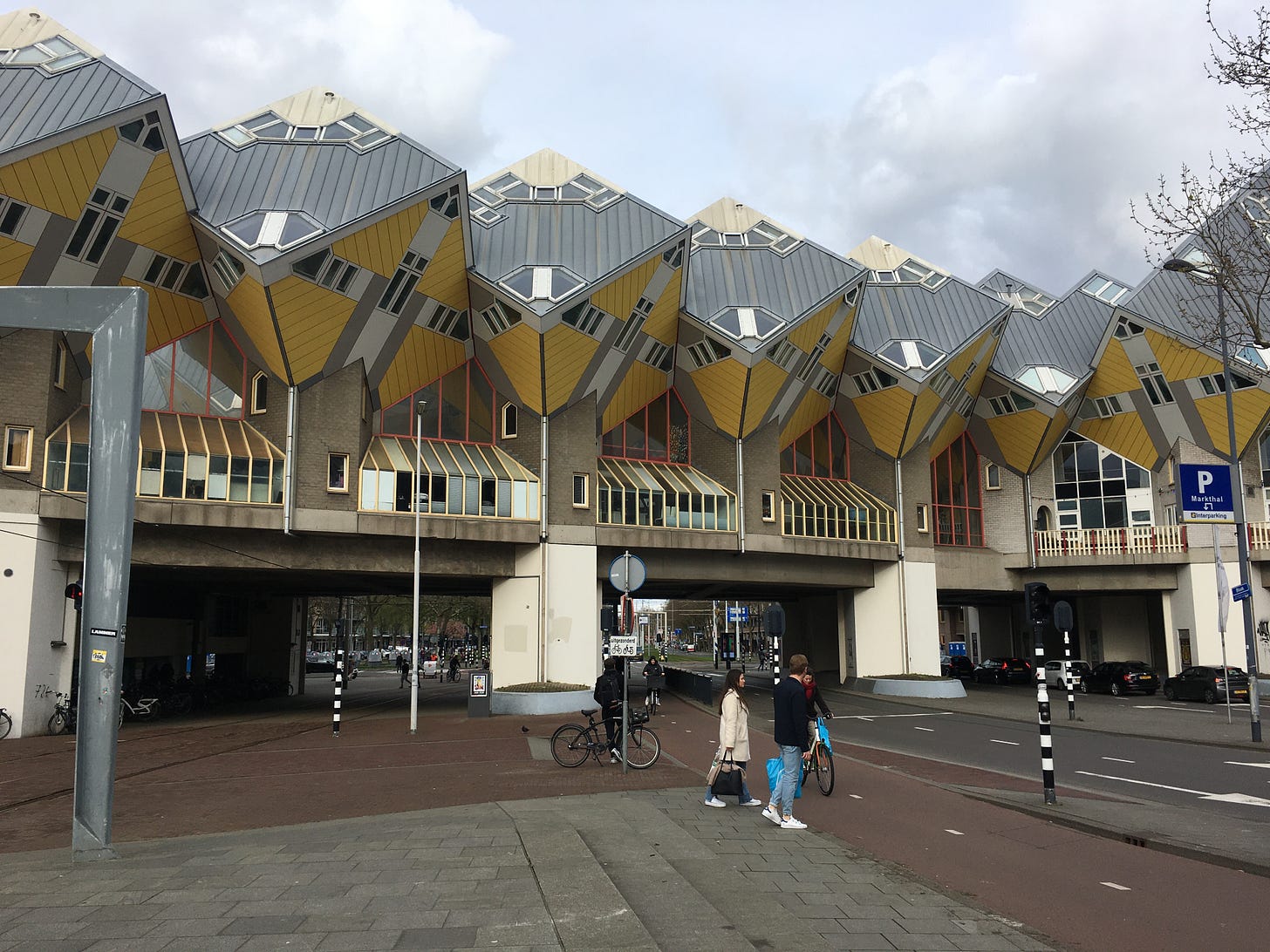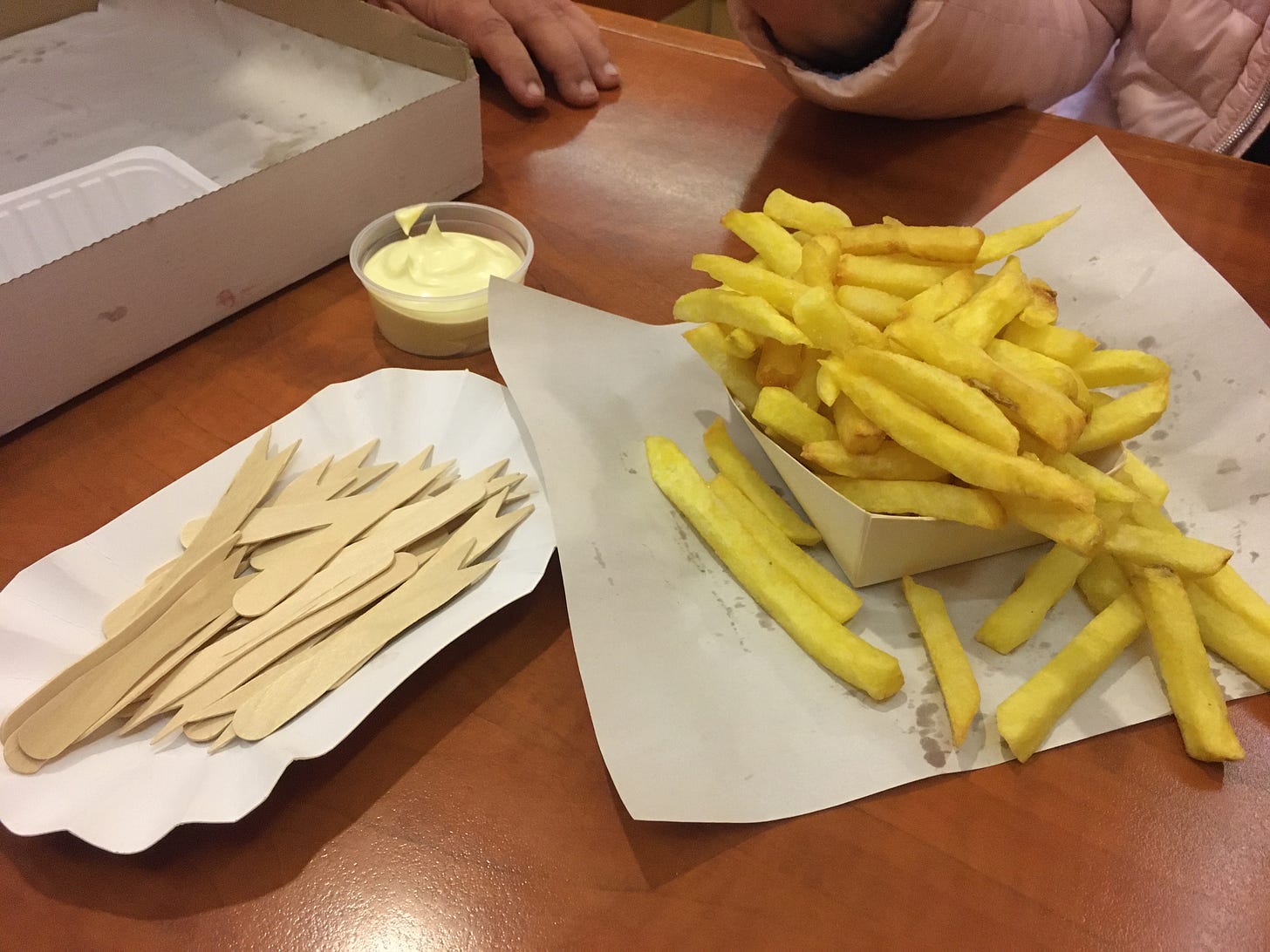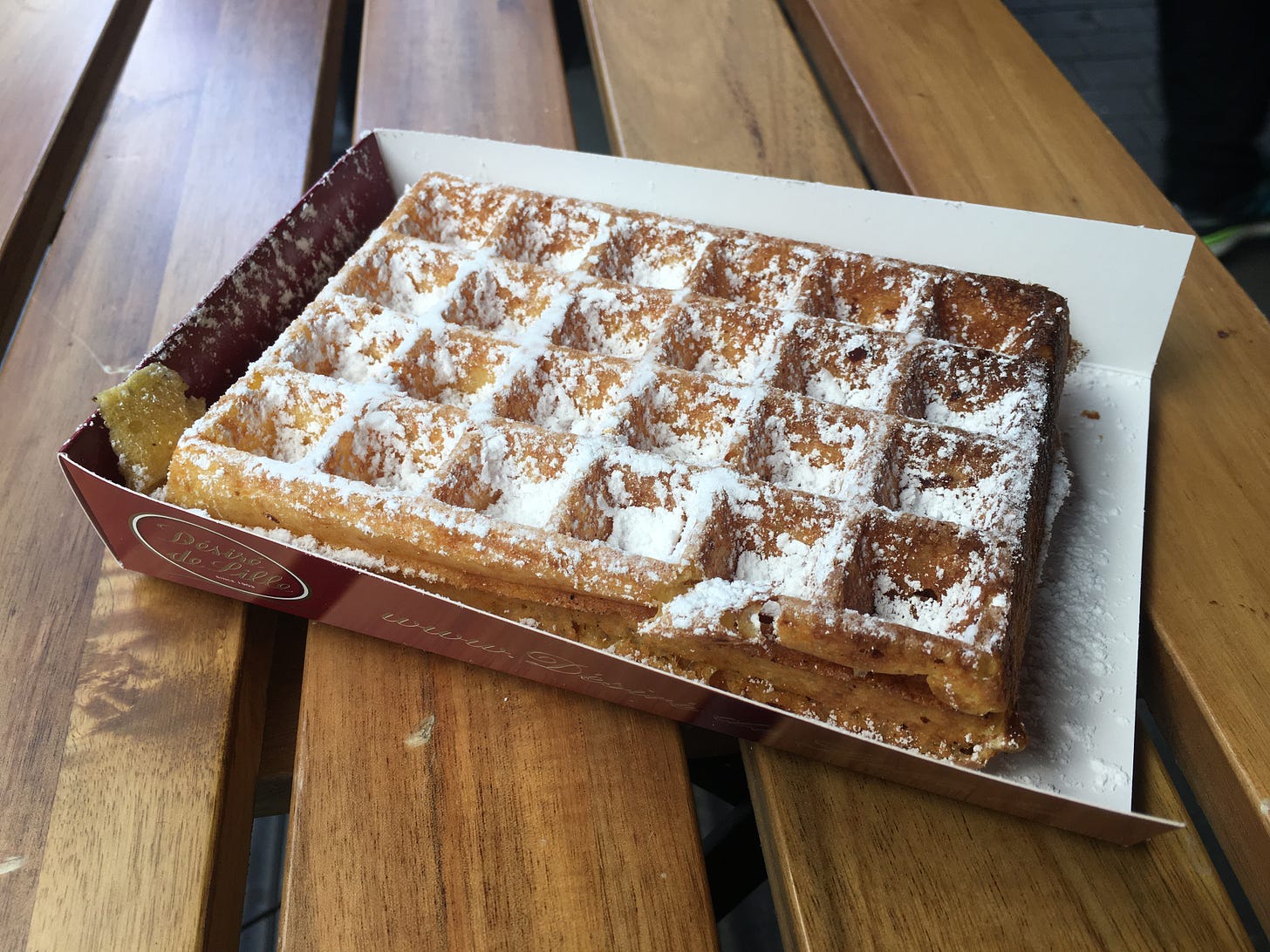Pids Abroad Travel Guide: Red’s Guide to Rotterdam and Antwerp
So you want to go to a Feyenoord or Royal Antwerp match?
This past April, I took a vacation to the Netherlands and Belgium. This included visits to Rotterdam and Antwerp as well as covering a Feyenoord match. Here’s how I’d recommend visiting the two cities and taking in a Feyenoord and Royal Antwerp match.
Flying:
Given the size of the two countries, they each have one main international airport: Amsterdam (AMS) and Brussels (BRU). There are commercial airports in Rotterdam and Antwerp. But you’re going to get way more flights and airline options at the two main ones.
If you’re in Europe for more than a few days, you’ll be doing other touristy things. The two capitals are centrally located and have so much to do. The train systems are very good for doing a day trip to any stadium in the Eredivisie or Belgian Pro League.
Regional Transit:
Belgium and the Netherlands have great train networks. Think Amtrack but better. I took them regularly on my trip. They’re relatively easy to navigate. Every transit employee I met to spoke English fluently.
Do your research before hand so you know the schedule, train and platform numbers, etc. Use the NS and SNCB. They’ll have info on delays, extra fees for peak times and direct routes (fewer stops), etc. Give yourself time to get to the station, wait in line at the kiosk/counter, and find the right platform. They can seem a bit expensive. A one-way trip from Amsterdam Centraal to Rotterdam Centraal varied from €15-35 when I was there.
Local Transit:
Both cities have a light rail network. The maps and labels were very good at the stations. While employees speak English, the signage was mostly in the local language(s). Antwerp is on the Flanders side of Belgium, so I saw/heard more Dutch than French when I was there.
Both stadiums have a stop dedicated to it. For De Kuip, take the 23 route (red) to Stadion Feijenoord. For the Bosuilstadion, it’s the Antwerp Stadion on the 5 (red).
There were usually two ticket options: A two-hour pass and a day pass. Prices varied but the day pass was ~4 x the two-hour pass price. I saw very few one-way ticket options the entire trip. If you’re staying in the city and going a few places that day, the day pass will be well worth it. In some cases, you pay for the ride on the train itself. For the Feyenoord game, the light rail to and from Rotterdam Centraal to the stadium and back were free, so check for that before buying a ticket to get you to the match.
Match Tickets:
It’s easy, believe it or not. Both club websites are straight forward and Google Translate does well with Dutch. You will have to register a fan account with the club website to purchase tickets directly. Both clubs release access to single game tickets in tiers. With no purchase history, you’ll be in the last group, with tickets released 2-3 weeks ahead of time. Plan ahead. Neither club is fully selling out on season tickets and regular fans, so if you check the fan portal the day tickets become available, there should be some left. Both club websites have an email address for ticket/fan account issues. The people who respond most definitely speak English.
If that doesn’t work, StubHub and other European equivalents operate as a secondary market. I avoid scalpers like the plague. That said, I know plenty of stories of Americans going to games oversees who tweeted about getting tickets and tagged the club, a supporter’s group, and a major fan account and got everything sorted in a day or two. Tell them you’re an American and you want to see Bassett or Vines respectively play in person. Maybe they’ve got an extra ticket or know someone who does.
Things to do besides the game:
Rotterdam is one of the more modern cities in the country. The port was bombed heavily by the Nazis during WWII. If you’re into architecture, there’s a very modern downtown on the north side of the river. The city has several cool buildings and bridges, including the one Jeff Bezos messed with for his yacht. The most popular of these is Kubuswoningen (“Cube Houses”). Just 30 minutes southeast of Rotterdam Centraal is Kinderdijk, a UNESCO World Heritage site with nineteen 17th century windmills.
If I were doing another trip to the Netherlands, I’d stay in Amsterdam and do a day trip to the game. Pack breakfast and catch an early train. Late morning trip to Kinderdijk. Back downtown for a beer or two. Afternoon kickoff. Dinner and any souvenir shopping downtown, then a stroll to the train station, back to Amsterdam about 10 pm local time.
Antwerp has a wonderful and very walkable medieval city center. Bring sturdy shoes with good sole support. The cobblestone streets do damage after several miles. Grote Markt has amazing Renaissance and Gothic architecture. It’s very close to the Cathedral of Our Lady, a famous Gothic church. The harbor/waterfront is less scenic but has Het Steen, a 13th Century castle, and the MAS Museum. The other popular museum is Ruben’s House, home to Pieter Paul Rubens, a Flemish painter from the 1600s.

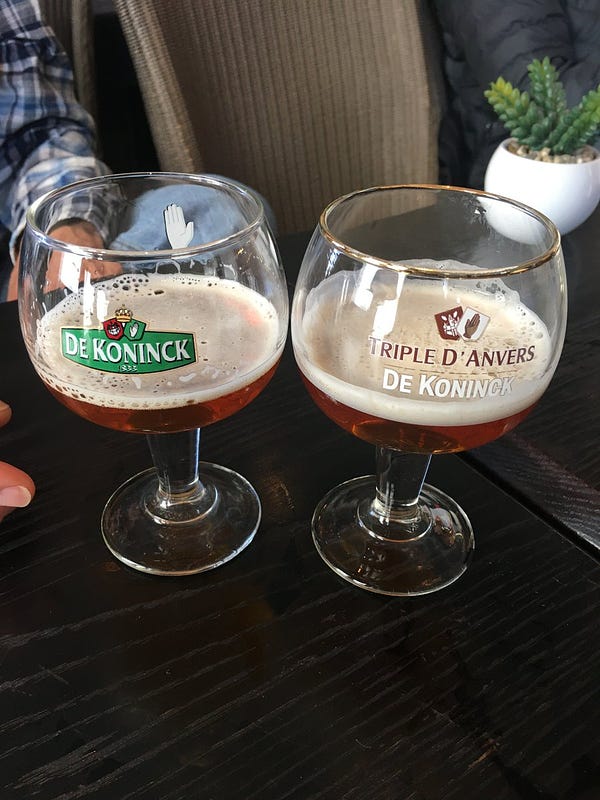
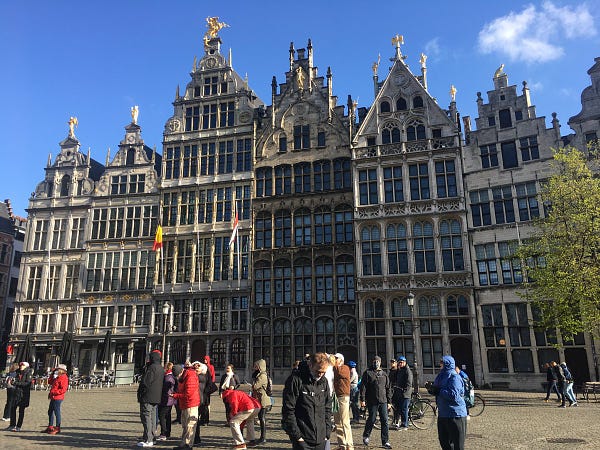
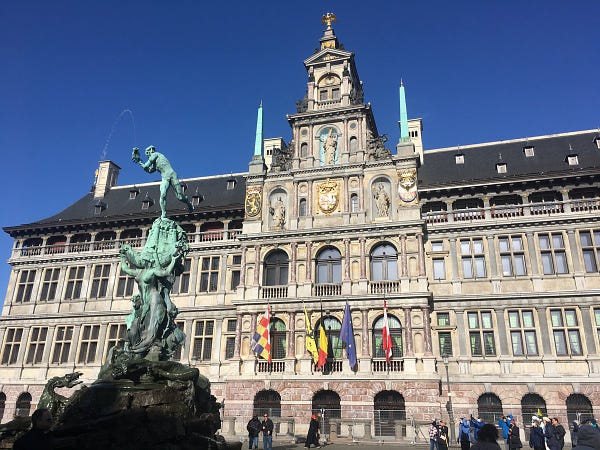
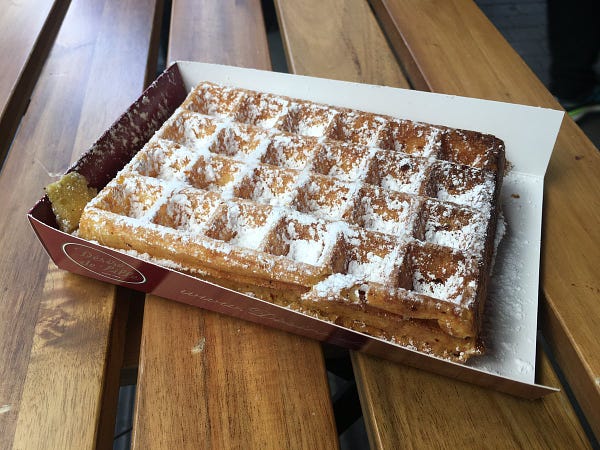
If I were to do a Belgium-only trip, I’d hop around to a few places. If I was going to use one city as a home/hotel base it would be Brussels. But you could do overnights in Bruges, Ghent, and Antwerp without running out of things to do. I’d do two days in Antwerp. Leave one day for the tourist activities and shopping (it’s a diamond and chocolate hub). Then on matchday, leave 1-2 hours for wanderlust in the Meir and Zurenborg neighborhoods. Eat and drink your way through the city on the way to the stadium.
On non-match days, Feyenoord has tours of De Kuip. I could not find any evidence of Antwerp offering stadium tours, but they’re in the middle of a multi-stand renovation that predates Sam’s transfer, so that might change once construction is done.
Scran and Beer:
I saved the best part for last. In either country, the waffles, cheese, and fries are going to be amazing. Belgian waffles are closer to the waffles we eat in America. Dutch waffles can be a little firmer and variations like the Stroopwafel are amazing but a different food. The Netherlands has chippies just like England if you want street food. The Belgian mayonnaise was my favorite of the condiments.
In Rotterdam, get some Poffertjes. They’re basically sweet mini pancakes. If you miss the mini donuts at DSG, you’ll love them. For a sit-down meal, anything root vegetable or cheese based will be good. The croquettes and the sauces they come with were amazing. Rotterdam isn’t the epicenter for raw herring, but they’ll have it. I liked it.
Beer wise, the Netherlands is Pilsner country. I liked Hertog Jan and Grolsch when I was there. I don’t normally drink Heineken, but the best Heineken I’ve ever had was in the Netherlands.
Antwerp’s a great city for foodies. The best waffles I had the whole trip were from Désiré de Lille. If you can’t make it to their brick-and-mortar restaurant downtown, they’re partnered with RAFC and serve waffles at home matches (just like GB’s at Dick’s only the relationship is healthy). Elsewhere, there’s great chocolate and Belgian truffles. Antwerp has great seafood as well and unlike Holland, none of it is raw.
I liked all the Grimbergen beers I had. The blonde was my favorite. Antwerp’s famous for De Koninck. Their signature beer is a dark pale ale called Bolleke, which directly translates to “small ball.” The name comes from the shape of the glass it is served in, a bowl or pint-sized goblet. Just say “bolleke” when you order at the bar. You’ll get instant street cred with the locals. Out of Bruges, there’s Half Moon which has a wider spectrum of beers. They’re world famous for having a two-mile beer pipeline (in Bruges, not Antwerp). Lastly, there’s Elixir d'Anvers, or “liquor of Antwerp.” My dad thought it tasted like all-purpose cleaner. It tasted ok to me. If you’re looking to get sea level hammered for the RAFC match, Elixir d'Anvers will do it.
Drinking age in both Belgium and the Netherlands is 18. Please consume responsibly.
HTHL is now partnered with BETUS, America’s favorite sportsbook. Click here for a 125% sign-up bonus.




